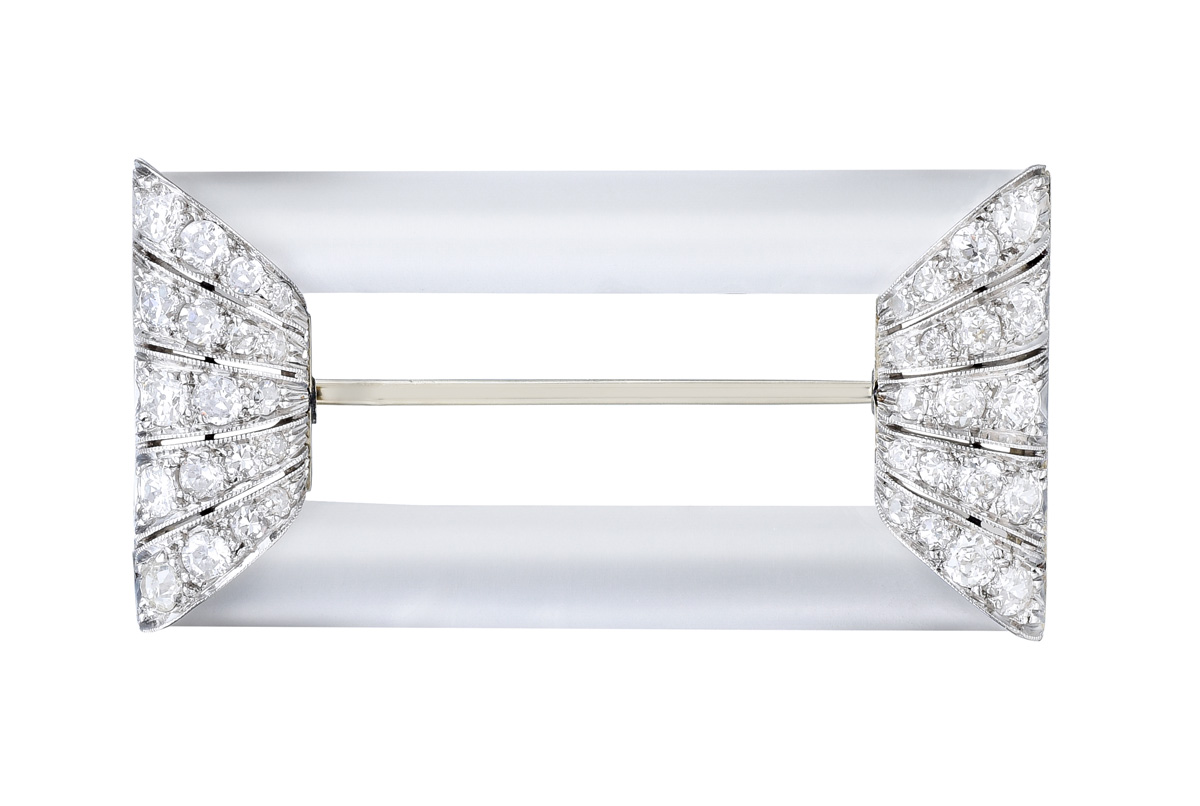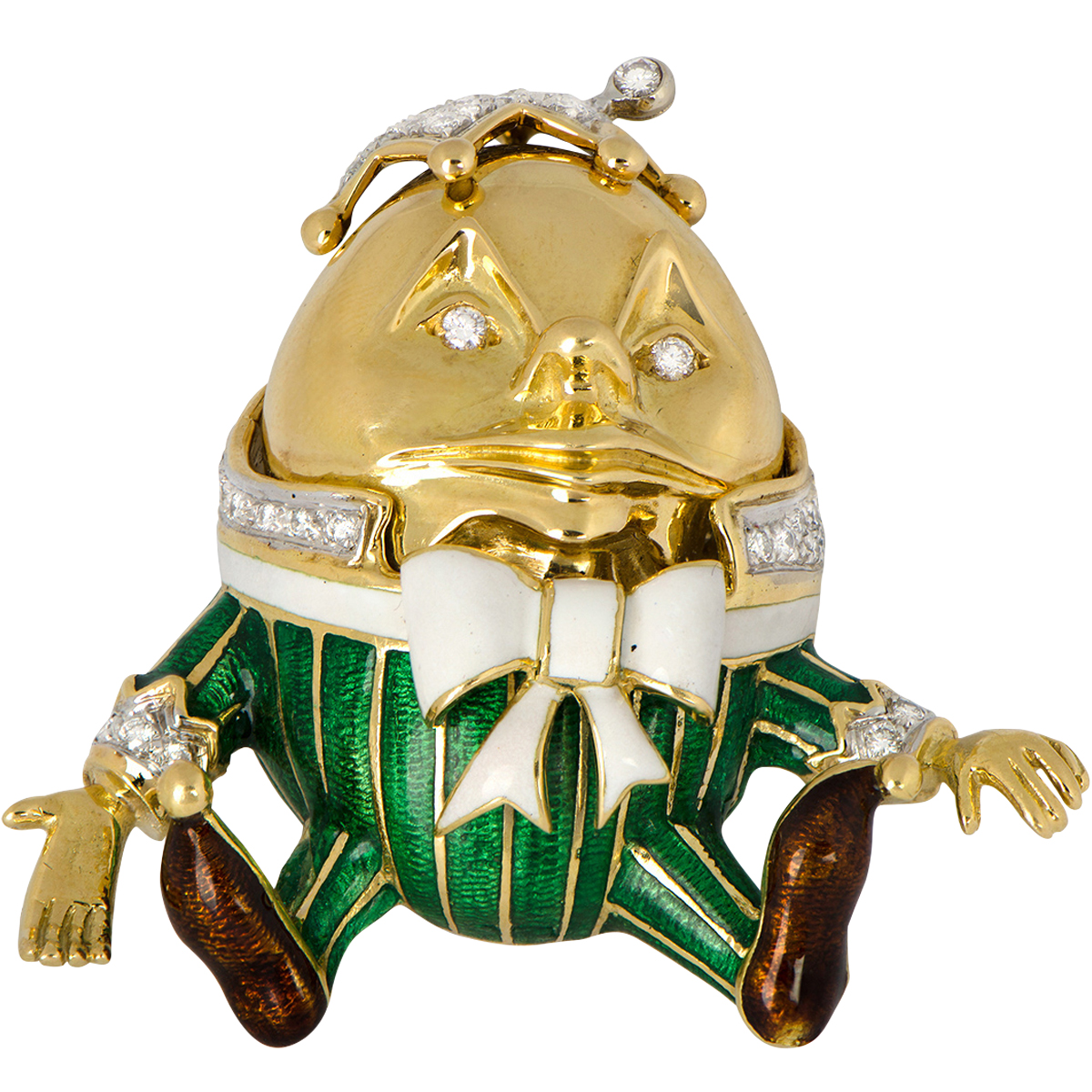Every era has its jewelry designers who rise to the top and become household names. Yet there are many talented designers who either worked behind-the-scenes for famous makers, or who had their own firms that created innovative jewelry but were known only to a select clientele. Three designers in particular — J.E. Caldwell, Marchak and Donald Claflin — stand-out as names that are not readily known, but who jewelry collectors should know. Each of these three designers created ground breaking work and are connected to each other by the quality of their craftsmanship and the originality of their designs that have stood the test of time and look as fresh and exciting today as they did when the jewelry was first made.

James Emmott Caldwell was born in Poughkeepsie, New York, in 1813. Like many of his generation, his education consisted of learning a trade. So, at the age of 14, Caldwell became an apprentice to the Poughkeepsie silversmithing firm, Peter P. Hayes. After earning master silversmith status, Caldwell moved to New York City, where he apprenticed to watchmaker Samuel Ward Benedict. In 1836, Caldwell moved to Philadelphia. His first job when he arrived there was with jewelry wholesaler Samuel Hildeburn. Soon after, he took a new job with jewelry manufacturer John C. Farr & Son. Caldwell opened a retail store in 1839 or 1840 — reports vary on the date — and he partnered with James M. Bennett, founding Bennett & Caldwell. Bennett passed away and Caldwell and his previous employer, John C. Farr, began an association and the store name was changed to J.E. Caldwell & Co. James Emmott Caldwell died in 1881, leaving his son, James Albert Caldwell, as head of the company. The firm later became known for its expertise in Art Nouveau jewelry. Handmade pieces captured the fantasy creatures and sensual women that were characteristic motifs of the era using very fine gemstones and metal chased surfaces. But the firm is perhaps best known for its creations made during the Art Deco era. The artisans in the workshop created jewelry following the fashion of the time, but with their own twist, making for some outstanding examples of jewelry from that period.

The story of Marchak spans many decades. It all began with Joseph Marchak, who was born in 1854 just outside of Kiev in Russia. When he was 14 years old, he was apprenticed to a jeweler where he honed his talent. In 1878, he started his own business making gold chains. Business boomed and he moved to a five-room flat on the main street in Kiev, growing his business to include more than chain making. He entered the international stage when he won a medal at the Chicago World’s Fair in 1893 and another in Antwerp in 1894. He became very well known in Russia where his biggest competitor was Faberge´ and as his fame spread, Marchak became known as the “Cartier of Kiev.” In the early twentieth century, there was much unrest, with the Russian Revolution and World War I brewing, yet business was good. Joseph Marchak died in 1918, but his youngest son Alexander, a law student in Paris who took classes at the École des Beaux Arts returned to Russia. After mandatory military service, he joined the family business. Around 1920, the family packed up their jewelry and left for Paris, where they set up shop. In 1922, Alexander Marchak and designer Robert Linzeler began a collaboration that resulted in the duo being invited to exhibit at the Exposition Internationale des Arts Décoratifs et Industriels Modernesheld in Paris in 1925, where they won the Grand Prize. The pair split soon after. In 1931, Marchak won Grand Prize at the Colonial Exposition, also held in Paris. After World War II, Alexander Marchak brought designer Alexander Diringer on board and later hired Jacques Verger, who became head of the company. Alexander Marchak retired in 1957. Verger and a partner bought out his shares, continuing to successfully run the firm until the late 1980s.

Born in Massachusetts in 1935, Donald Claflin moved to New York City, where he studied at the Parsons School of Design. Early in his career he worked as an illustrator and in textile design. His first foray into jewelry design came when he went to work for David Webb, then in 1966, he was invited to work at Tiffany & Co. Claflin was known for his artistic, detailed designs that frequently incorporated the skills of master craftspeople in enameling, gem setting and goldsmithing, resulting in pieces that were like miniature sculptures. He was one of the first designers, if not the first, to work with the gemstone Tanzanite. He created a collection showcasing the purplish-blue gemstone from Tanzania, which was introduced by Tiffany & Co. in 1969. Claflin is well known for his fanciful interpretations of characters from children’s stories, including Humpty Dumpty, Stuart Little and Alice in Wonderland. In 1977, Claflin left Tiffany & Co. and went to Bulgari in New York, during which time, he developed a streamlined, modern aesthetic for the venerable Italian jeweler. Claflin passed away suddenly in 1979.

